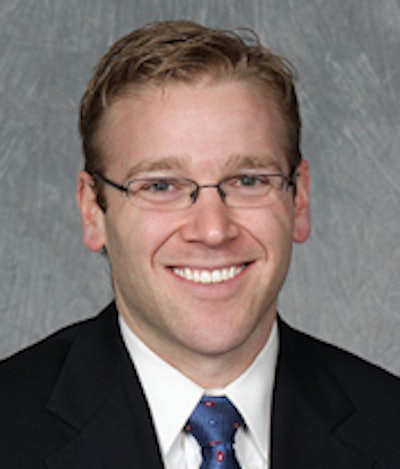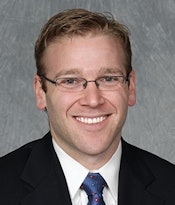
In an era when pressure to contain healthcare costs increases almost daily, the U.S. Centers for Medicare and Medicaid Services (CMS) has worked to cut imaging costs across all modalities. Its efforts with one particular exam, CT of the abdomen -- performed both with and without contrast -- have been effective with radiologists, who have reduced their rates by 35% since 2001.
But other physicians haven't followed suit, according to a presentation given at the recent American Roentgen Ray Society (ARRS) annual meeting. Instead, nonradiologists' rates of these "double" CT scans have increased, even after CMS released hospital outpatient cost- and radiation-reduction metrics in 2006, according to presenter Dr. Jonathan Flug of the University of Colorado in Aurora.
 Dr. Jonathan Flug of the University of Colorado.
Dr. Jonathan Flug of the University of Colorado."There's been extensive scrutiny regarding these double scans and how they increase cost and radiation dose, and CMS' metrics came out of that," Flug told AuntMinnie.com. "But legislation targeting overutilization has not affected all physicians the same."
Limited indications
There are limited clinical indications for which double CT scans are appropriate, such as workup of an adrenal lesion, hematuria evaluation, or a CT angiogram, Flug said. Most CT scans of the abdomen can be performed without doing both phases and still yield an accurate diagnosis.
"However, reimbursement is higher for double scans than for single-phase imaging," he said.
For the study, Flug and colleagues used data from the Medicare Physician/Supplier Procedure Summary Master Files from 2001 through 2012 to identify national claims for CT examinations of the abdomen, both with and without contrast. They analyzed the data for changes in the use of double scans as a percentage of total abdominal CT examinations, in addition to sorting by criteria such as provider specialty and site of service. Sites of service included physician offices, inpatient and outpatient hospital settings, and the emergency department.
"Since CMS' metrics only targeted payment rates for the outpatient hospital setting, we wanted to see how this would affect the practice patterns in other imaging settings," Flug said. "Once we started breaking down the data, we decided to look at the type of physician performing the imaging as well."
The total rate of double CT scan use as a percentage of all abdominal CT studies went from 22.7% in 2001 to 22.2% in 2006, but then it fell to 14.8% in 2012. This represents a decline of 33.1% between 2006 and 2012, perhaps reflecting the effectiveness of federal pressure to reduce double scan utilization.
However, when the researchers parsed the data by specialty, they found that radiologists' rates of double CT use decreased much more than nonradiologists'.
| Double CT scan use as percentage of abdominal CT scans | ||||
| 2001 | 2006 | 2012 | Change, 2001-2012 | |
| Radiologists | 20.9% | 22.6% | 13.5% | -40.2% |
| Nonradiologists | 23.8% | 37.3% | 32.2% | 35.1% |
The site of service influenced the use of double CT exams as well, Flug's team found. In the private office setting, double scan rates changed little from 2001 through 2012 (30.9% versus 31.5%). However, declines occurred in all other types of sites:
- Inpatient hospital rates went from 16.2% to 6.4%, for an overall decrease of 60.8%.
- Outpatient hospital rates went from 27.4% to 19.9%, for an overall decrease of 27.3%.
- Emergency department rates went from 9.7% to 2.5%, for an overall decrease of 74.1%.
One of the study's limitations is that it did not tease out exactly why utilization trends for this particular CT exam differed among radiologists and nonradiologists, Flug told AuntMinnie.com. One theory is that nonradiologists don't necessarily understand when to use what exam.
"While there could be financial incentives at play, other possibilities could be related to less understanding of dose and the associated risks, or even less understanding of the indications for these scans," he said.
Policies intended to curb overuse of imaging should be tailored, Flug concluded.
"Future legislation targeting perceived overuse of imaging would be most effective if it were focused on those with the highest rates of utilization and those specific types of sites with higher levels of inappropriate imaging use," he said.





















